LEGEND OF THE DEEP
Behind the build of Paul Allen's 126m Lürssen explorer Octopus
The barest of details have been revealed about the mysterious Octopus over the past 19 years. But with a new owner and on the charter market for the first time, the 126-metre Lürssen is finally ready to reveal her secrets past and present, says Laura Nicholls
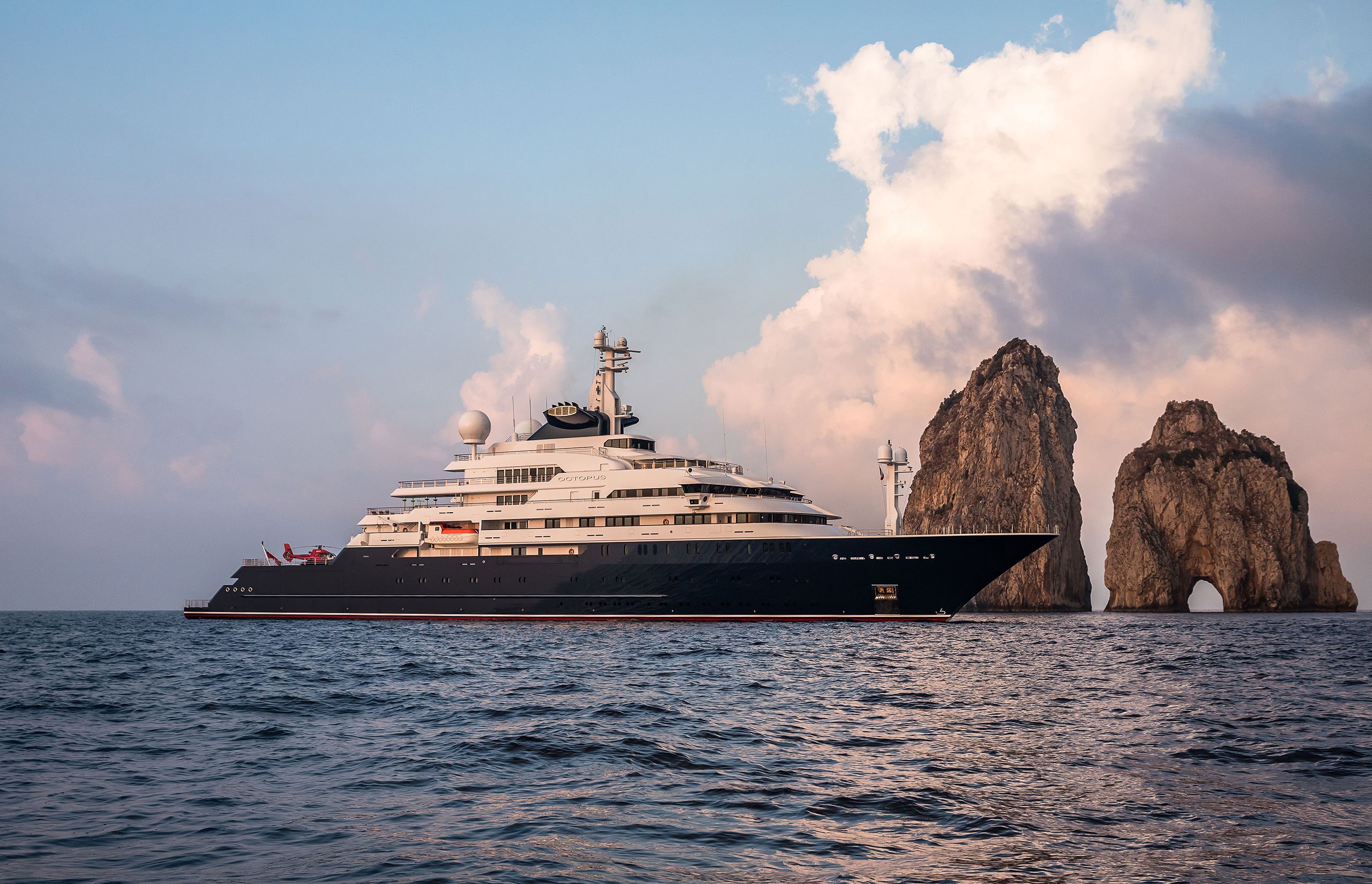
One of the best things about flying into the South of France is the view. The brilliant blue coastline is peppered with hundreds of yachts. On this flight, however, just one of the boats below us demands our attention: the 126-metre explorer Octopus.
The following day, in the port of Marseille where her new owner’s team is wrapping up a refit before Octopus departs for the Galápagos, I finally see her up close. Her navy-blue hull and skyscraper decks are incredibly impressive, while on the inside she is welcoming and warm. Although she has been refitted, her history is palpable. There’s much to learn about Octopus, and everyone involved in her story is finally ready to talk, after decades of silence.
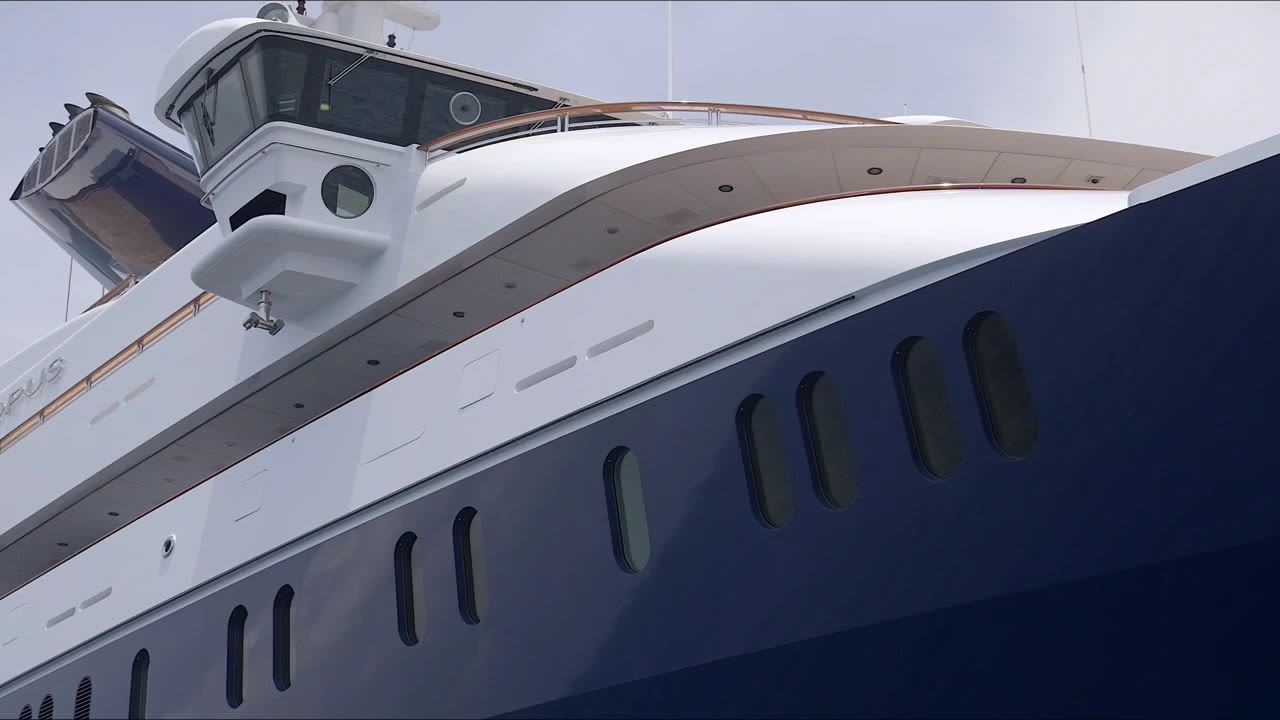
Why was Octopus such a secret? In 1998, strict non-disclosure agreements were issued all around to protect the privacy of her original owner, the late American entrepreneur and philanthropist Paul Allen, a co-founder of Microsoft. “It was the first time I was faced with an NDA,” says Espen Øino, who has gone on to sign hundreds over the years. “NDAs are strict and long lasting and don’t necessarily pass when the client does,” notes Jonathan Quinn Barnett, who created Octopus’s original interior. “I had deep respect and admiration for Mr Allen, so to be able to say even a few words about Octopus now is marvellous.”
For builder Lürssen, the story started with a bit of detective work. The German shipyard’s sales director, Michael Breman, heard about a mysterious box that was loaded onto Allen’s 60.6-metre Feadship Méduse, which supposedly contained a scale model of a new vessel.
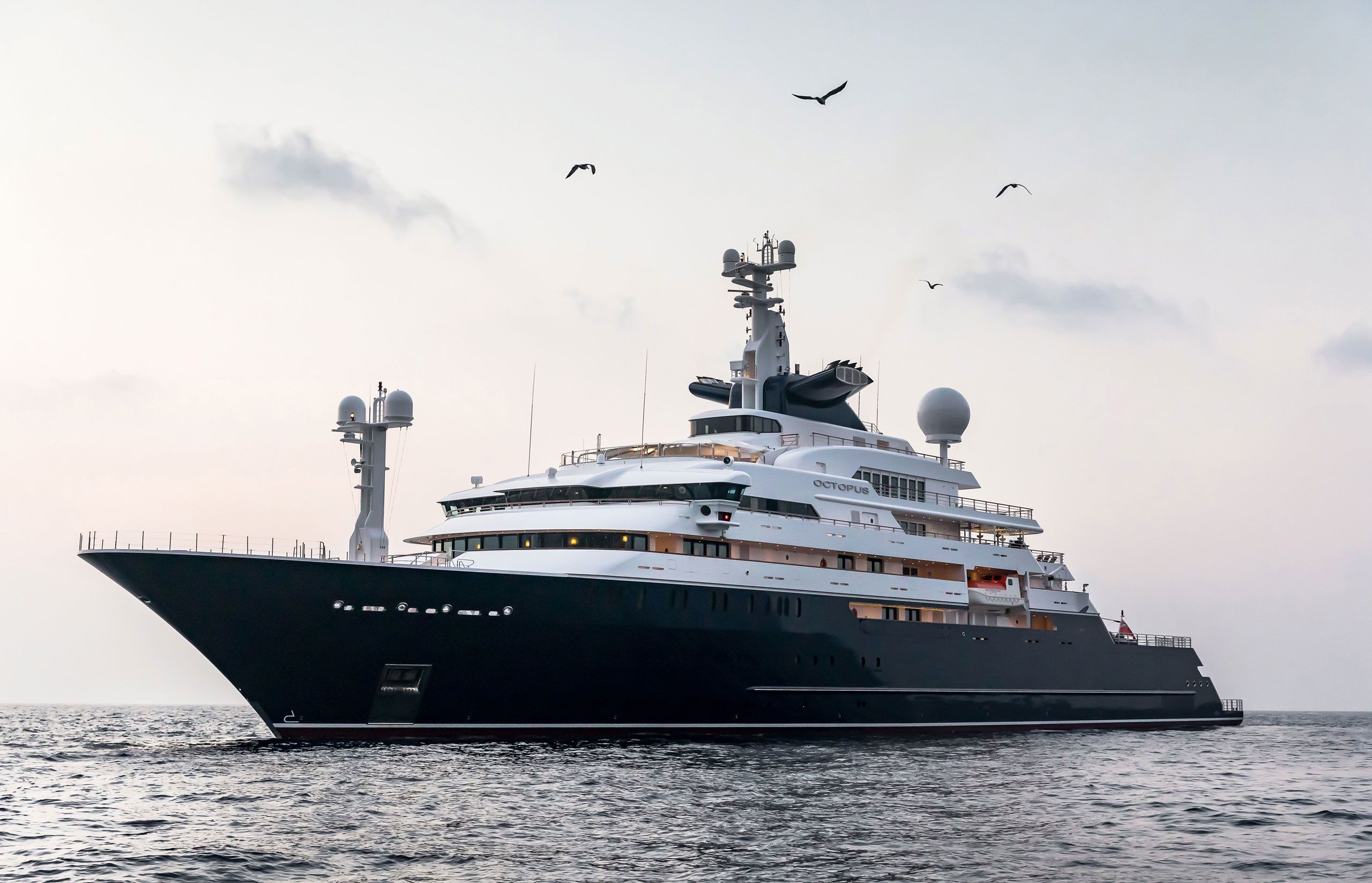
“I figured out that something was going on and we ought to be involved,” he says. “So I contacted Paul Allen’s broker, [Fraser’s] Stuart Larsen, to ask some questions.”
Some time after, during a trip to the South of France, Breman received the go-ahead to submit a bid and arranged for a fax containing the brief to be sent to Øino’s office in Monaco. “Put that into context, this is 1998!” Øino says with a laugh. “Michael was in our office as the fax came in and going through it, we just couldn’t believe the brief, we thought it was totally crazy.”
The brief called for an industrial-style yacht with the appearance and capability of the Finnish multipurpose icebreaker Fennica, built in 1993. Luckily, Øino knew the vessel. “I had a photo of Fennica from a few years earlier when I visited her while cruising with another client in the fjords,” says the designer. What he went on to sketch in pencil and model for the presentation was a sturdy explorer with two interchangeable options for the bow and the wheelhouse. “What is remarkable is that the original sketches and ideas are so close to what it actually became,” Breman says.
Another key part of the brief was for all toys and tenders, including a helicopter, a submarine and a floatplane, to be carried in a concealed way. So Øino drew a methodical general arrangement that included a two-level 36-metre-long floodable garage opening at the stern. “Launching so many toys over the side of the boat wasn’t the optimum idea and would affect the stability; a lot of heeling would occur,” the designer says.
Instead, working with the rules that oversee subdivisions inside a ship’s hull – and deal with damage stability calculations – he created one very long and tall compartment on the yacht’s centreline with a floodable dock flanked by rows of smaller garages to store the entire toy inventory of what became known as Project Octopus.
“At Lürssen, we give everything a project name, and my daughter came up with Octopus,” says Breman. “Along with Paul’s love for diving, plus the fact that his previous yacht was Méduse [“jellyfish” in French], we thought Octopus was a perfect project name. Little did we know then that Octopus would be her name once completed and delivered.” Øino says. “She was our 15th project enquiry in 1998, and so in my office, she was known as 9815.”
The proposal Lürssen created with Øino was successful, but the German shipyard soon had to resolve its first quandary – it didn’t have a shed available. “We ended up having to build her with a partner in Kiel,” Breman says. It also had to solve the matter of the explorer’s floodable garage, which had to be approved by class. “After researching multiple alternatives, the first idea that Espen drew was the one that worked the best,” he adds. “Our in-house model department then built a scale model of the garage to demonstrate how it could work. We even tested it by driving a tender in and out.”
Octopus’s interior, meanwhile, came from a young American designer who had recently relocated from London where he’d worked with Jon Bannenberg, to Seattle. The owner’s team chose Barnett from a small pool of interior designers to embellish the complex GA of the largest and most advanced explorer yacht ever built at the time.
“Paul Allen’s team told me the safest route would be to follow the creative direction of the owner’s two previous Feadship designs,” the designer says. “I did the opposite!” And the result was what Barnett describes as a “floating laboratory”, a timeless design perfectly suited to a creative genius. Included in the layout were out-of-the-box features such as a fully equipped medical centre, a storm cabin made to keep those who needed it comfortable in bad weather and a professional recording studio. “Back then, no yacht was capable of non-stop circumnavigation, while cutting an album for U2,” he says. Mick Jagger, Usher and Joss Stone are also said to have spent time in the studio – a claim no other superyacht is ever likely to make.
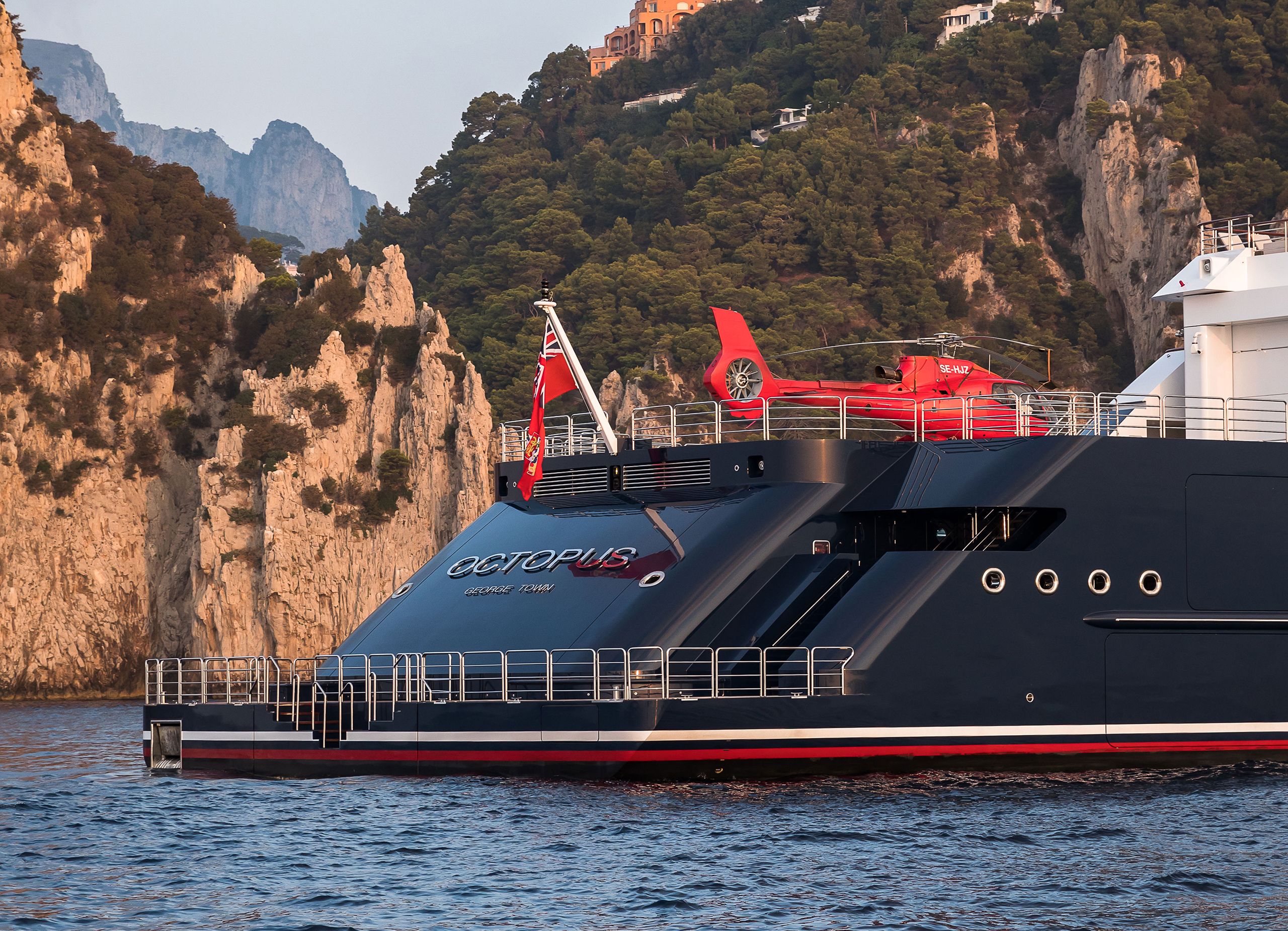
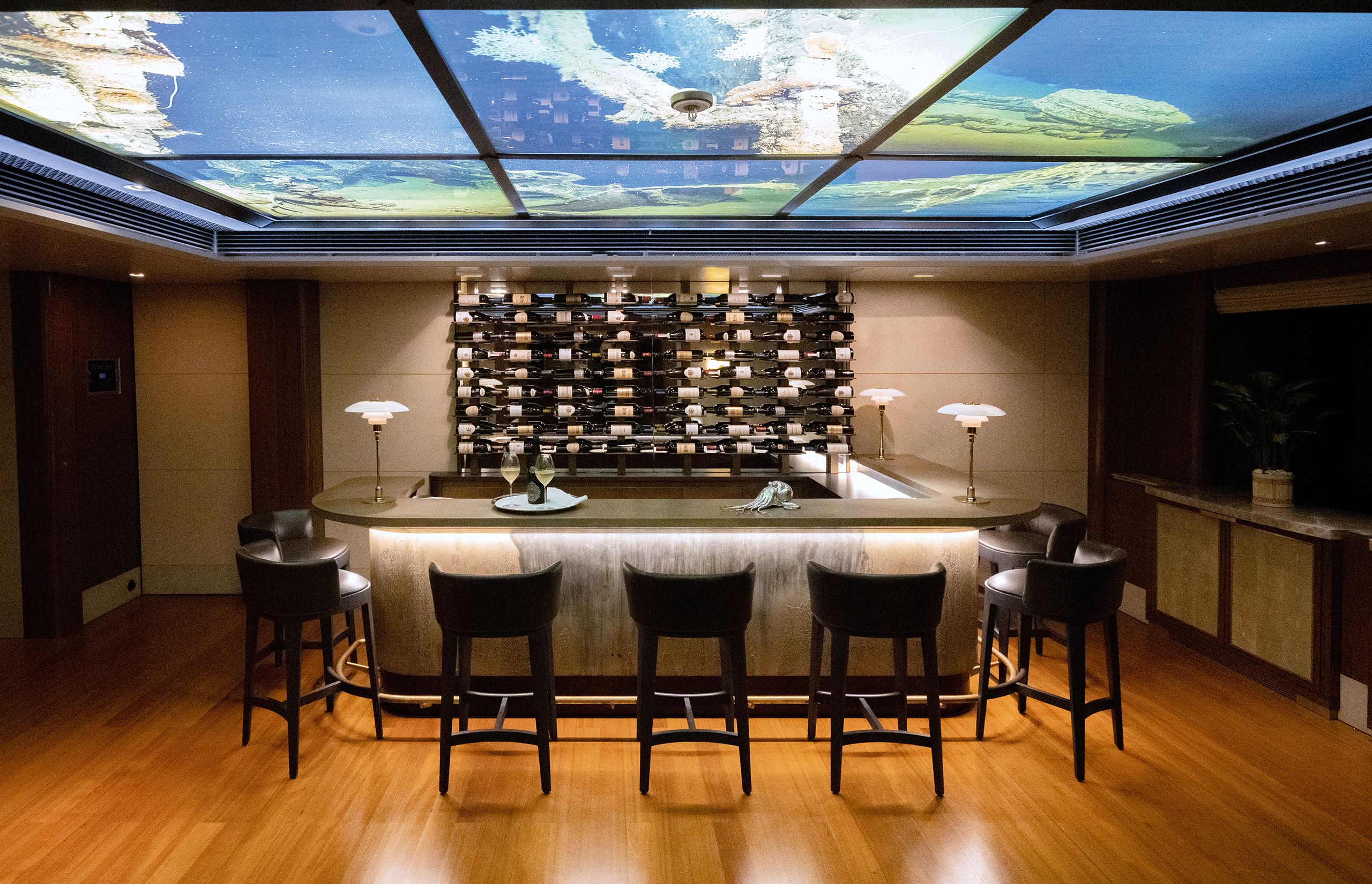
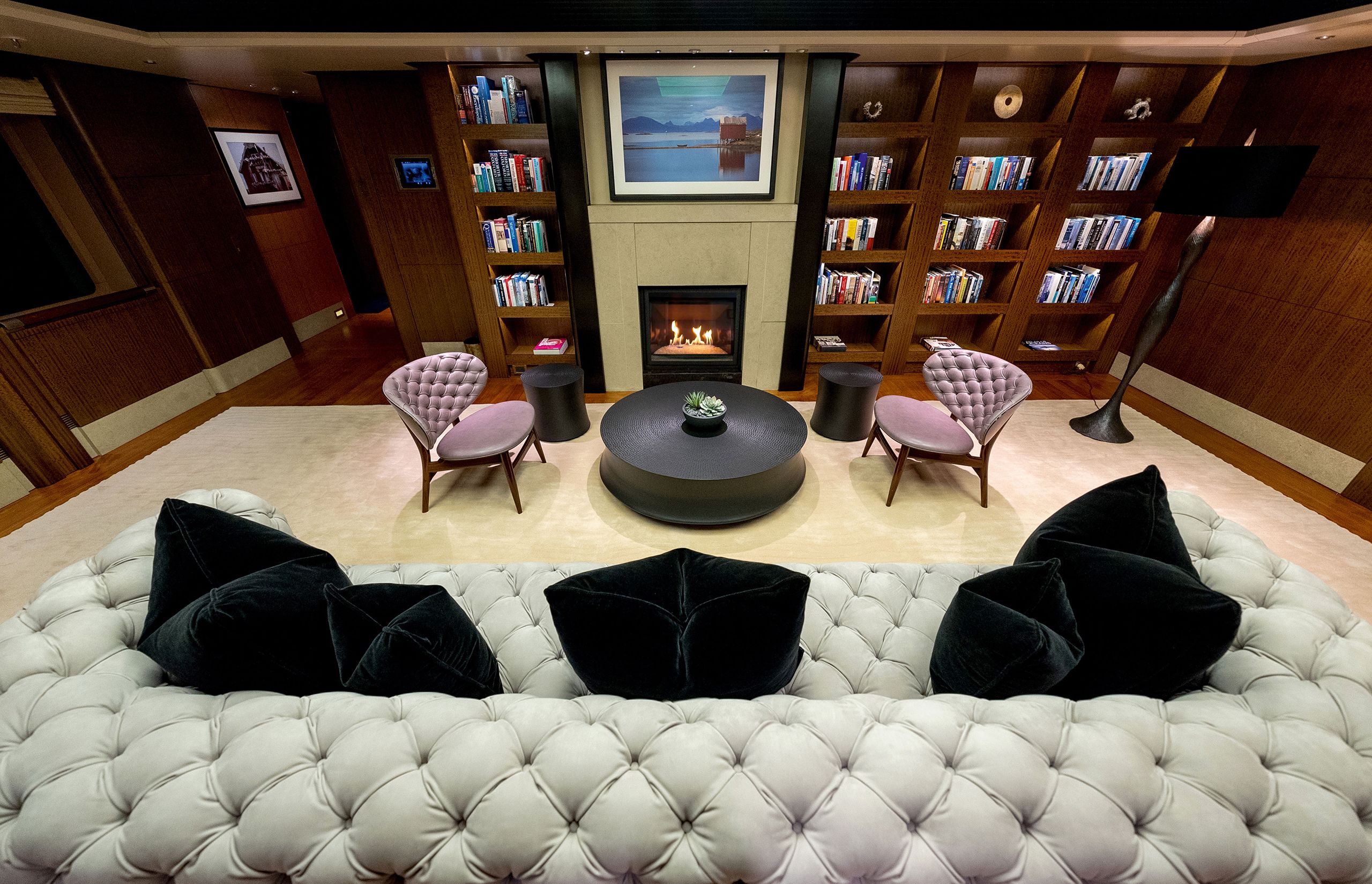
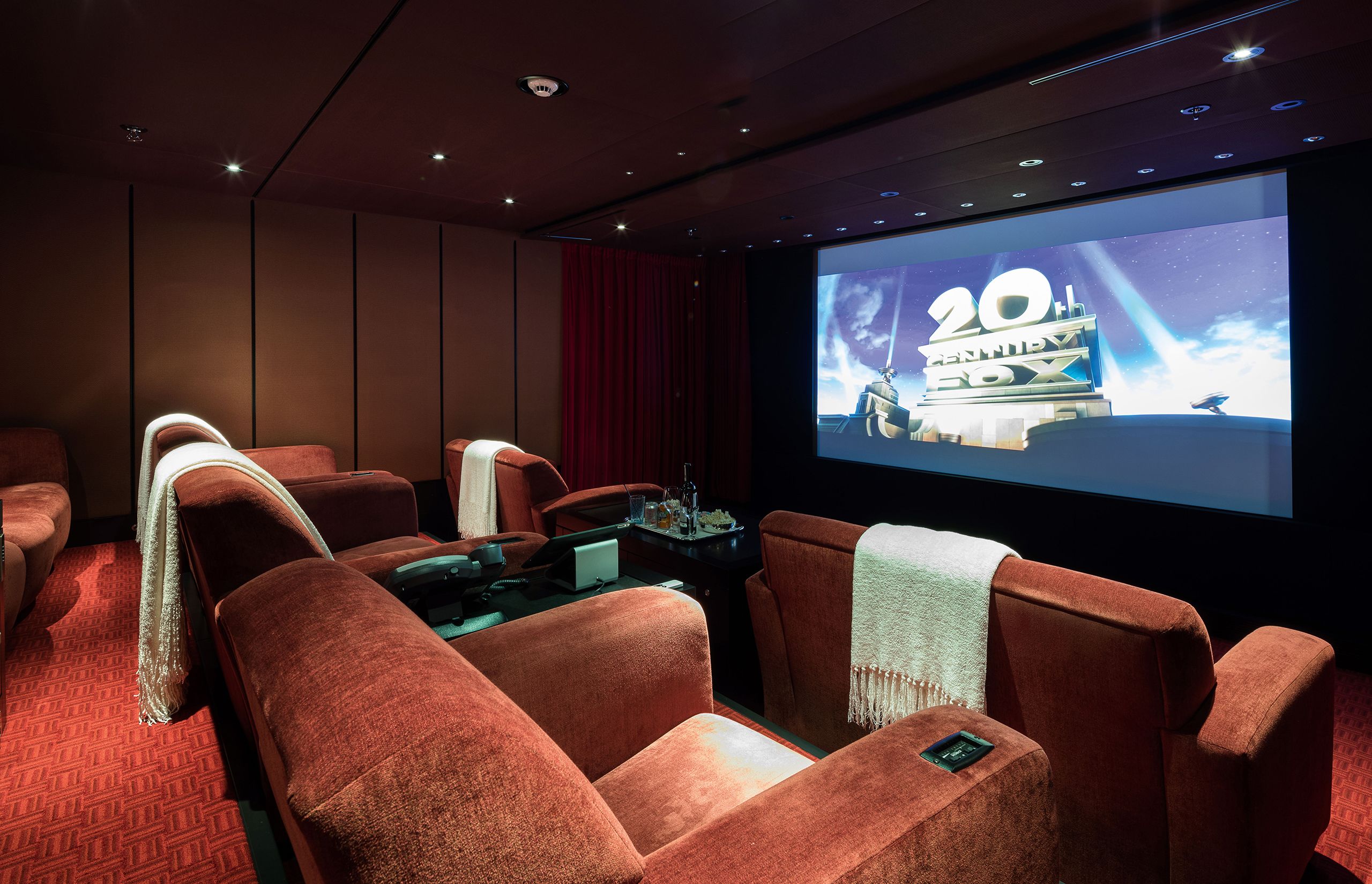
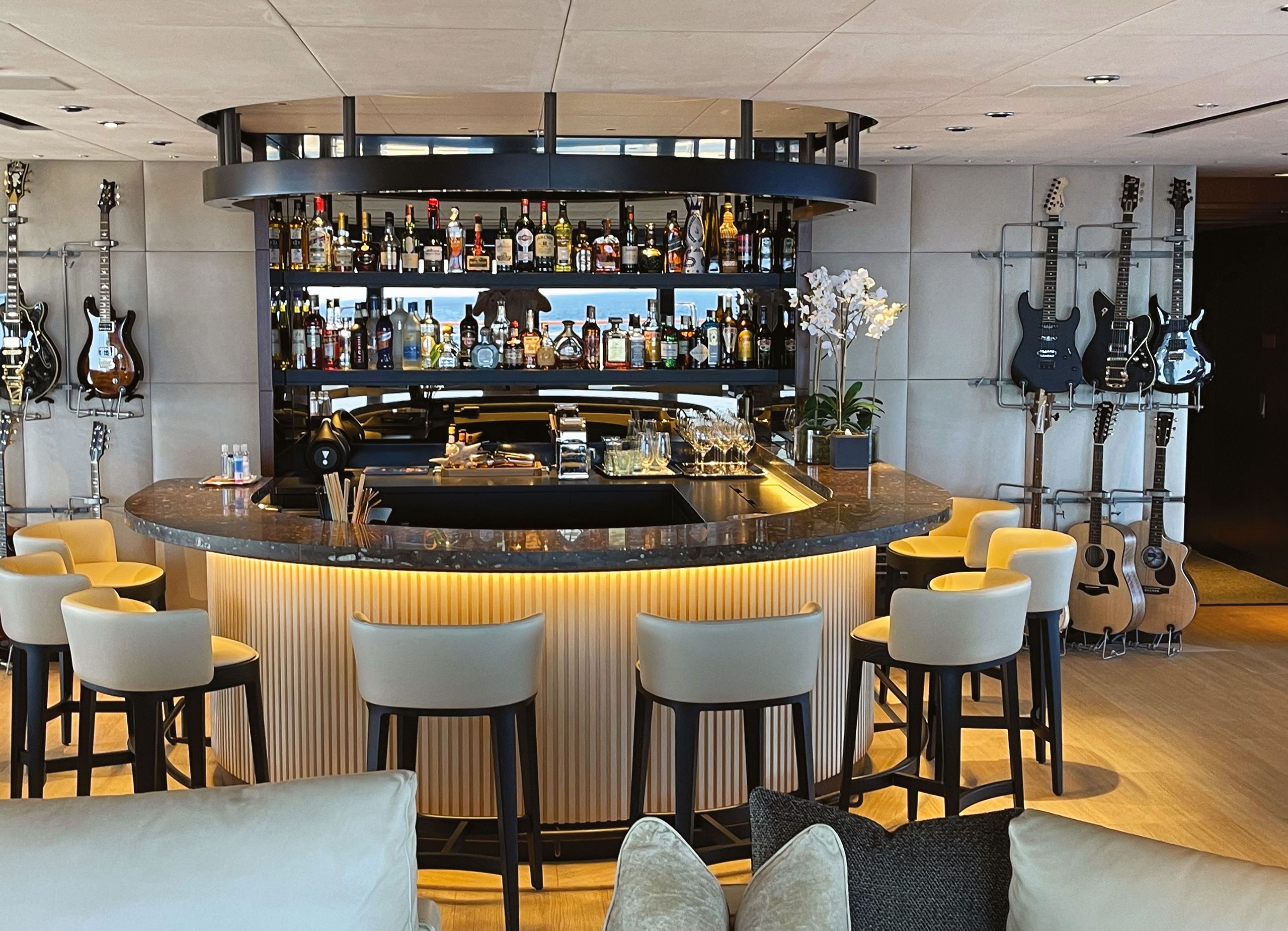
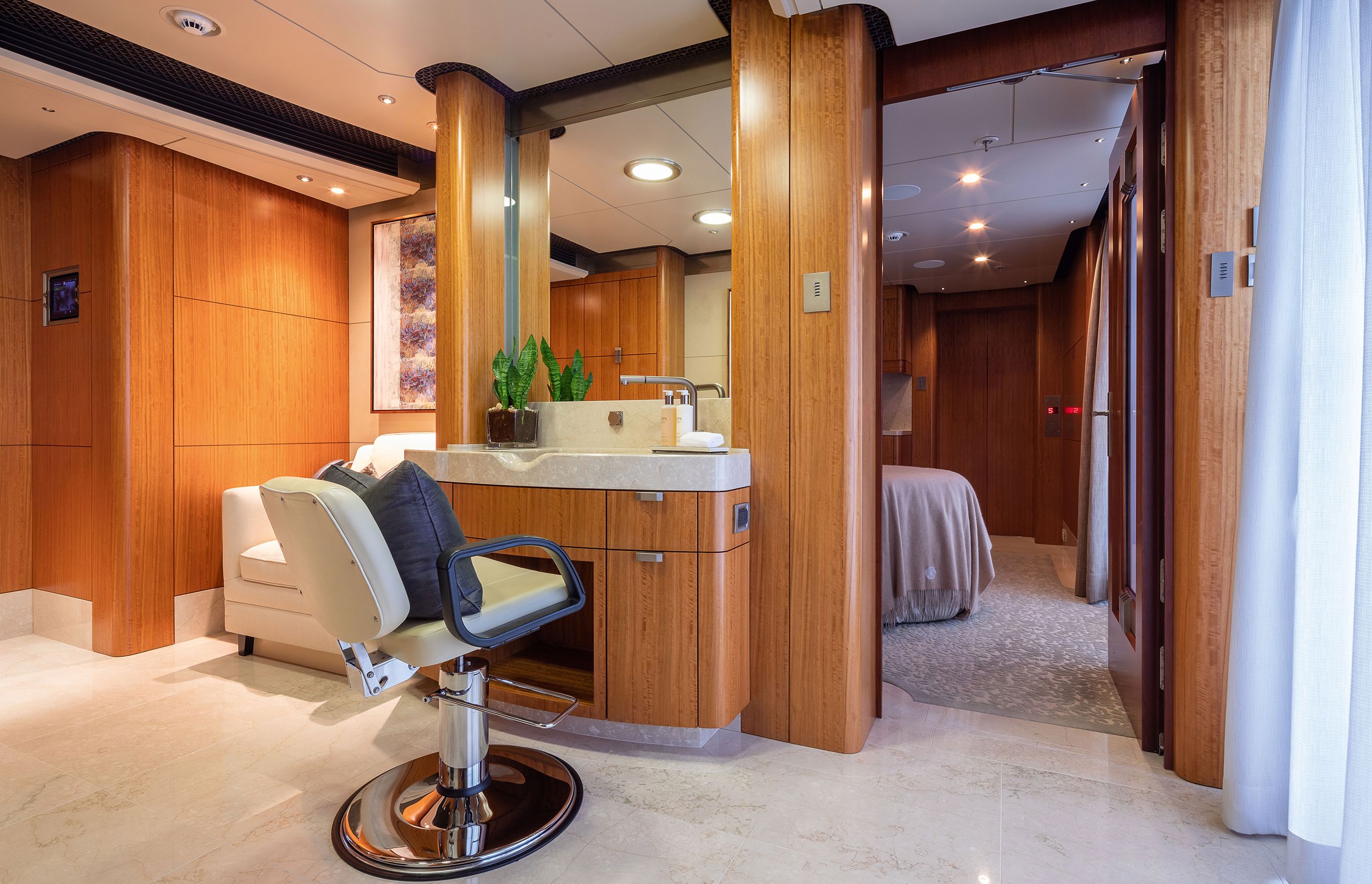

CAMPER & NICHOLSONS INTERNATIONAL
CAMPER & NICHOLSONS INTERNATIONAL

CAMPER & NICHOLSONS INTERNATIONAL
CAMPER & NICHOLSONS INTERNATIONAL

CAMPER & NICHOLSONS INTERNATIONAL
CAMPER & NICHOLSONS INTERNATIONAL

CAMPER & NICHOLSONS INTERNATIONAL
CAMPER & NICHOLSONS INTERNATIONAL

CAMPER & NICHOLSONS INTERNATIONAL
CAMPER & NICHOLSONS INTERNATIONAL
The entertainment deck hosts a cinema (bottom left), library (top right) and spa, including a beauty salon (bottom right), among other guest spaces. The former formal dining room on this deck became a wine bar (top left). On the backlit ceiling are scenes from Paul Allen’s 2015 shipwreck dive to the WWII battleship Musashi in the Philippines. The former recording studio has been converted into a bar and lounge with musical decor maintaining a connection to the past (bottom centre)
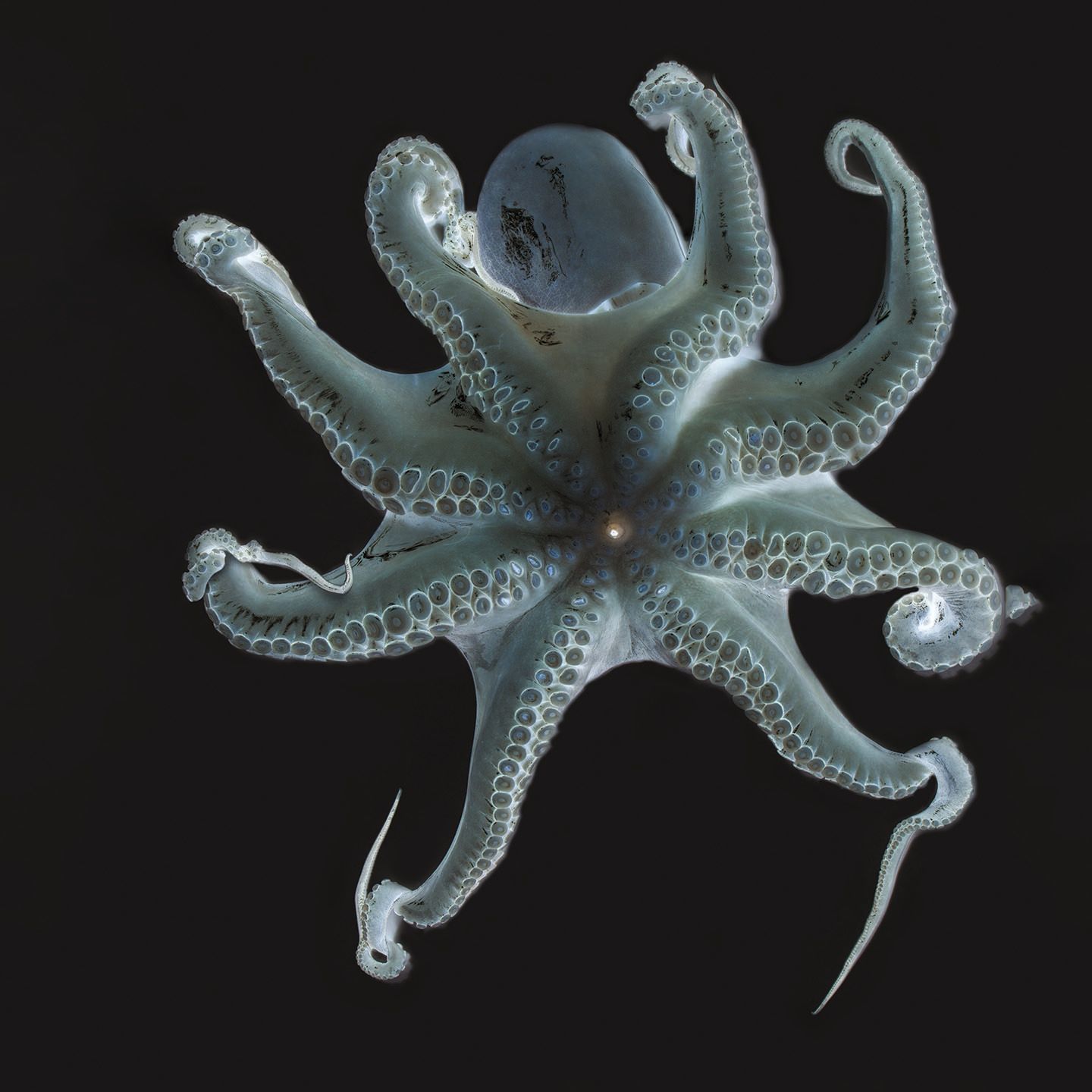
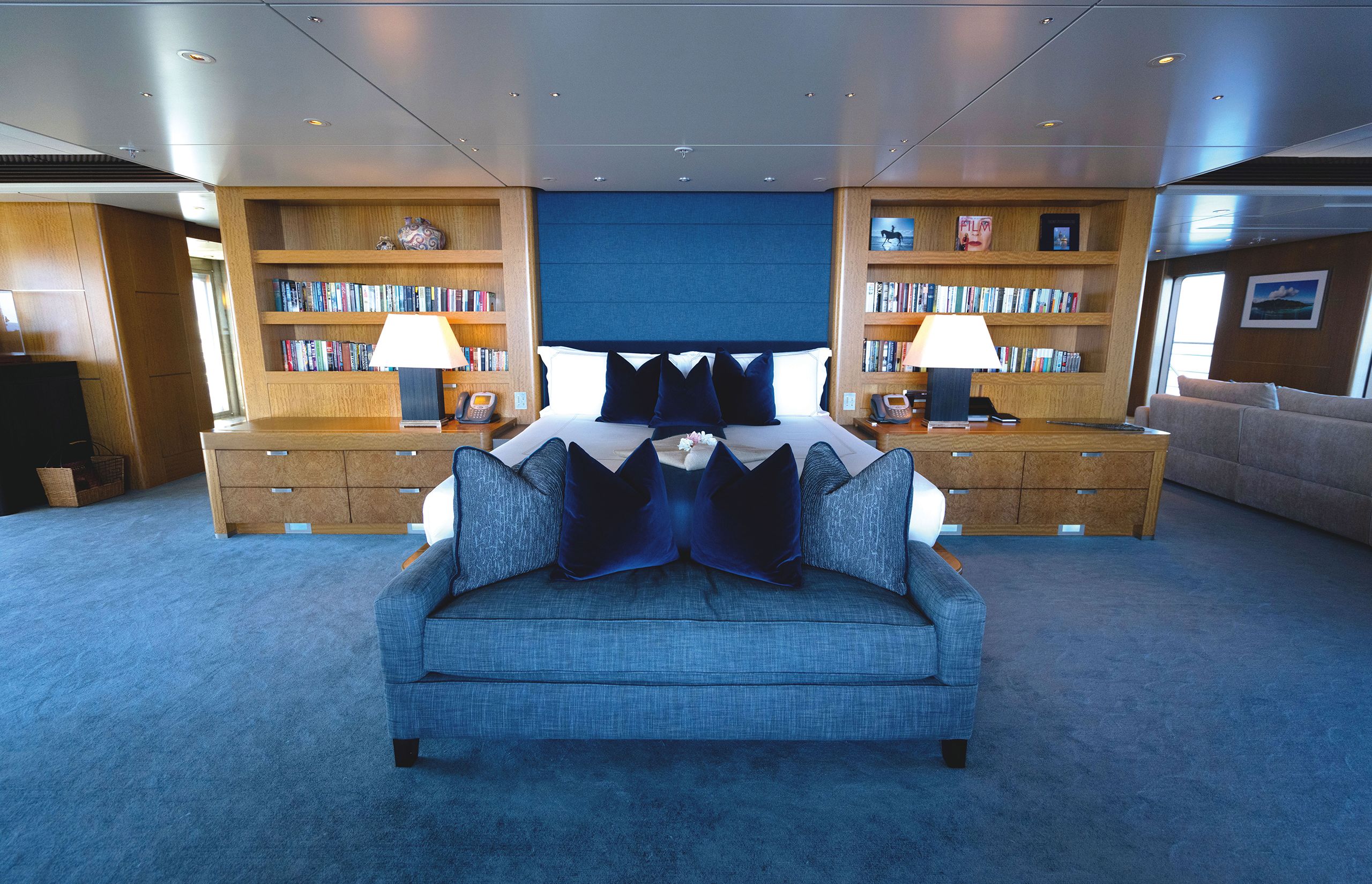
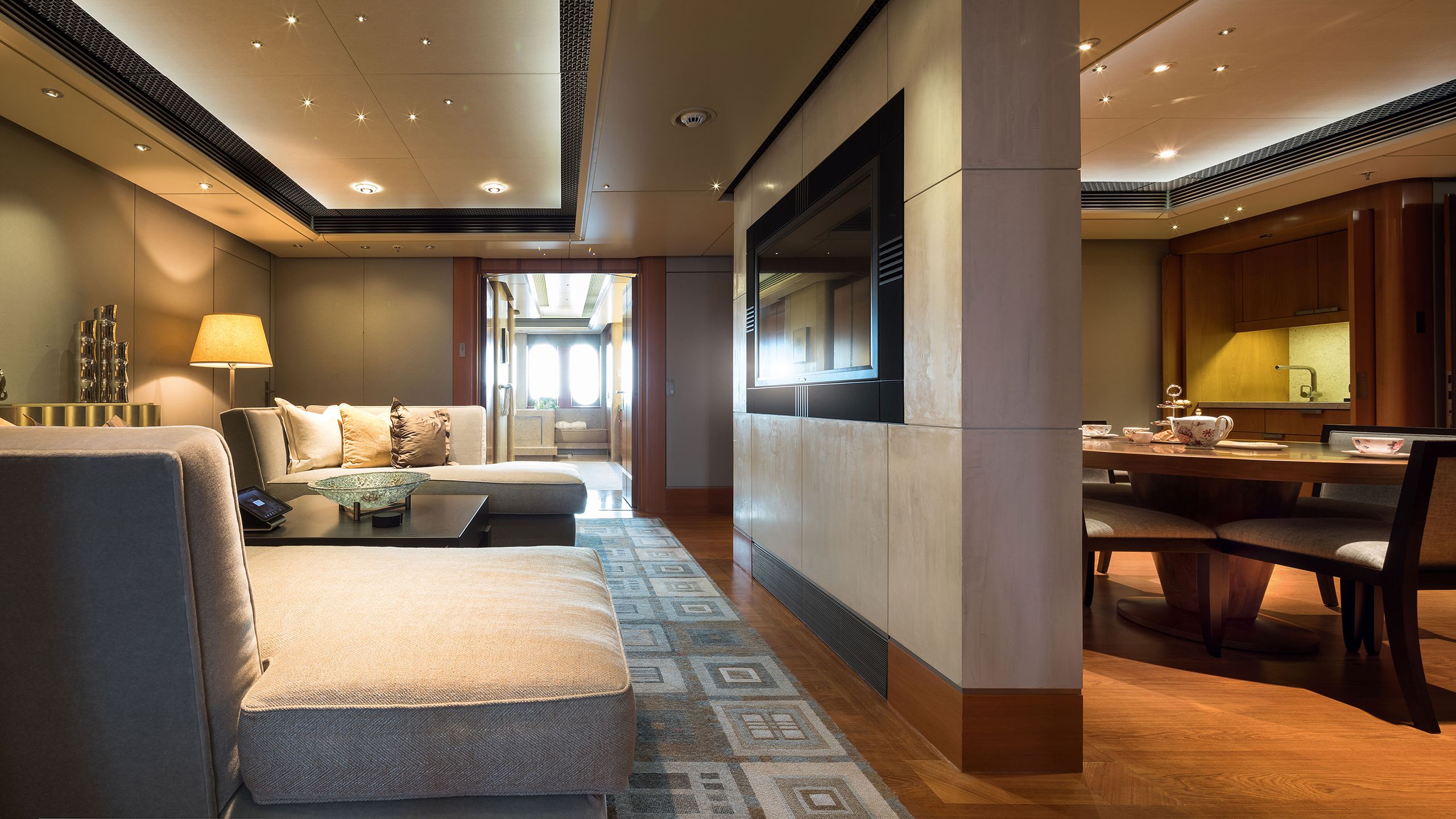
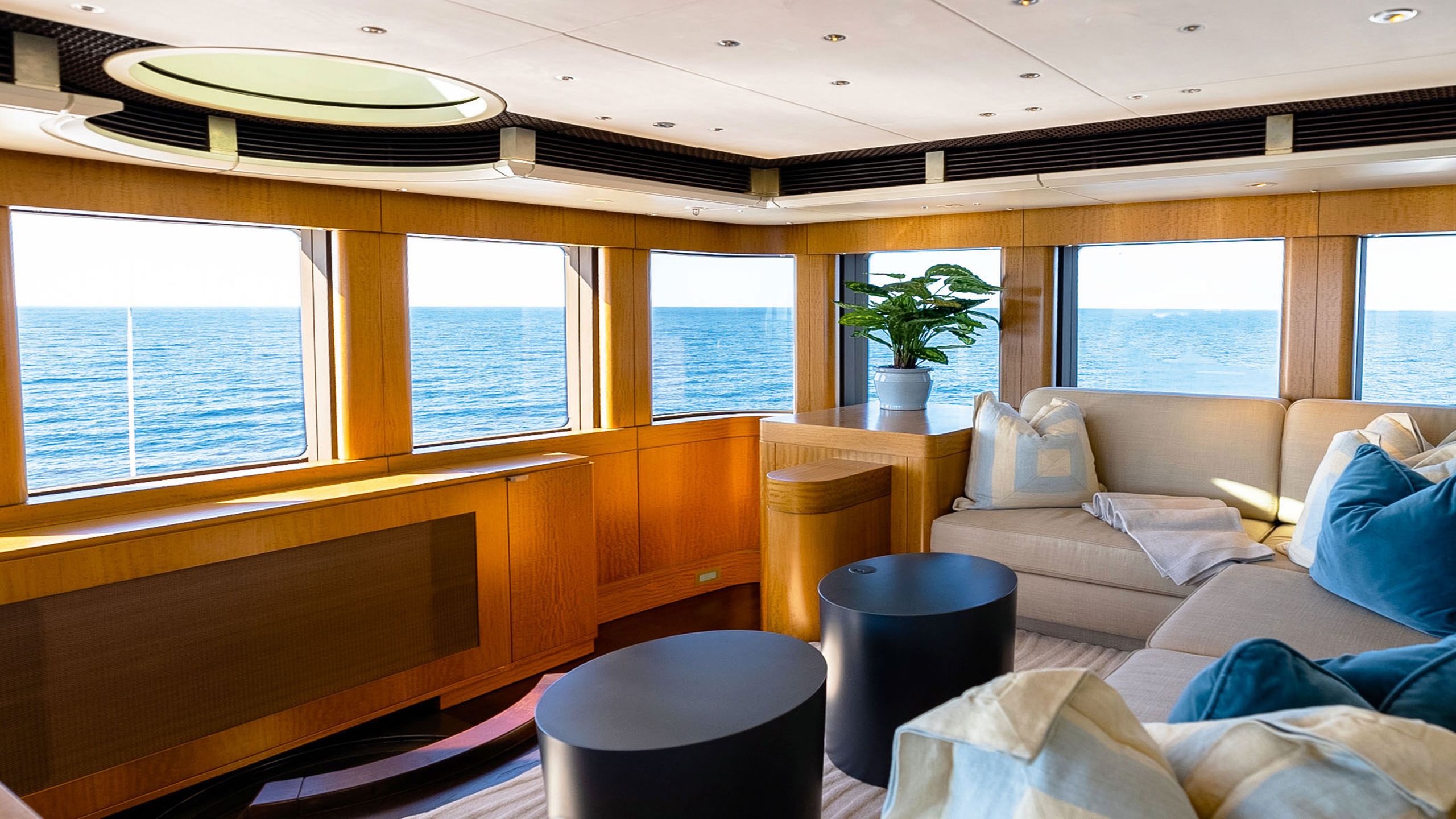
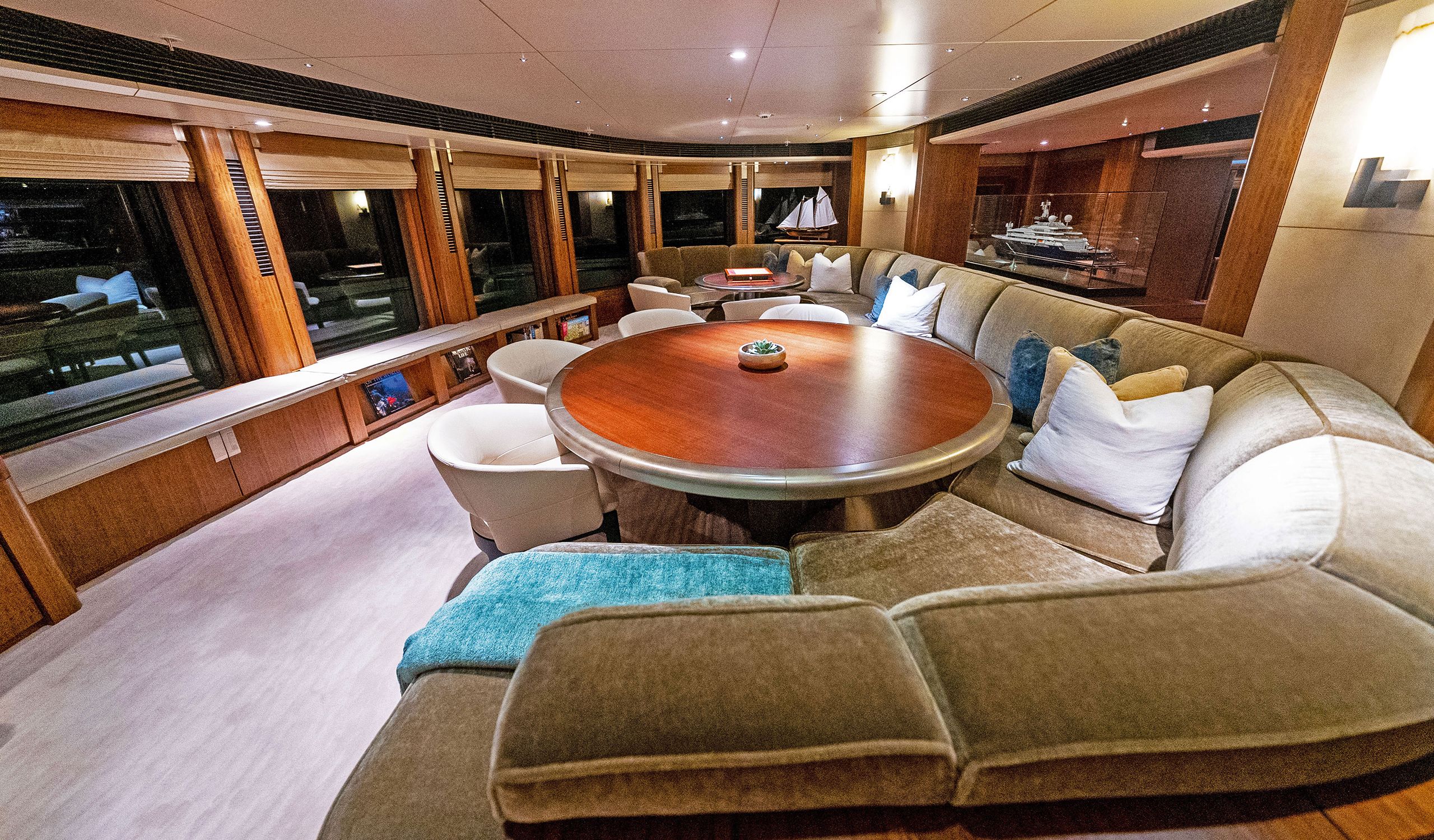
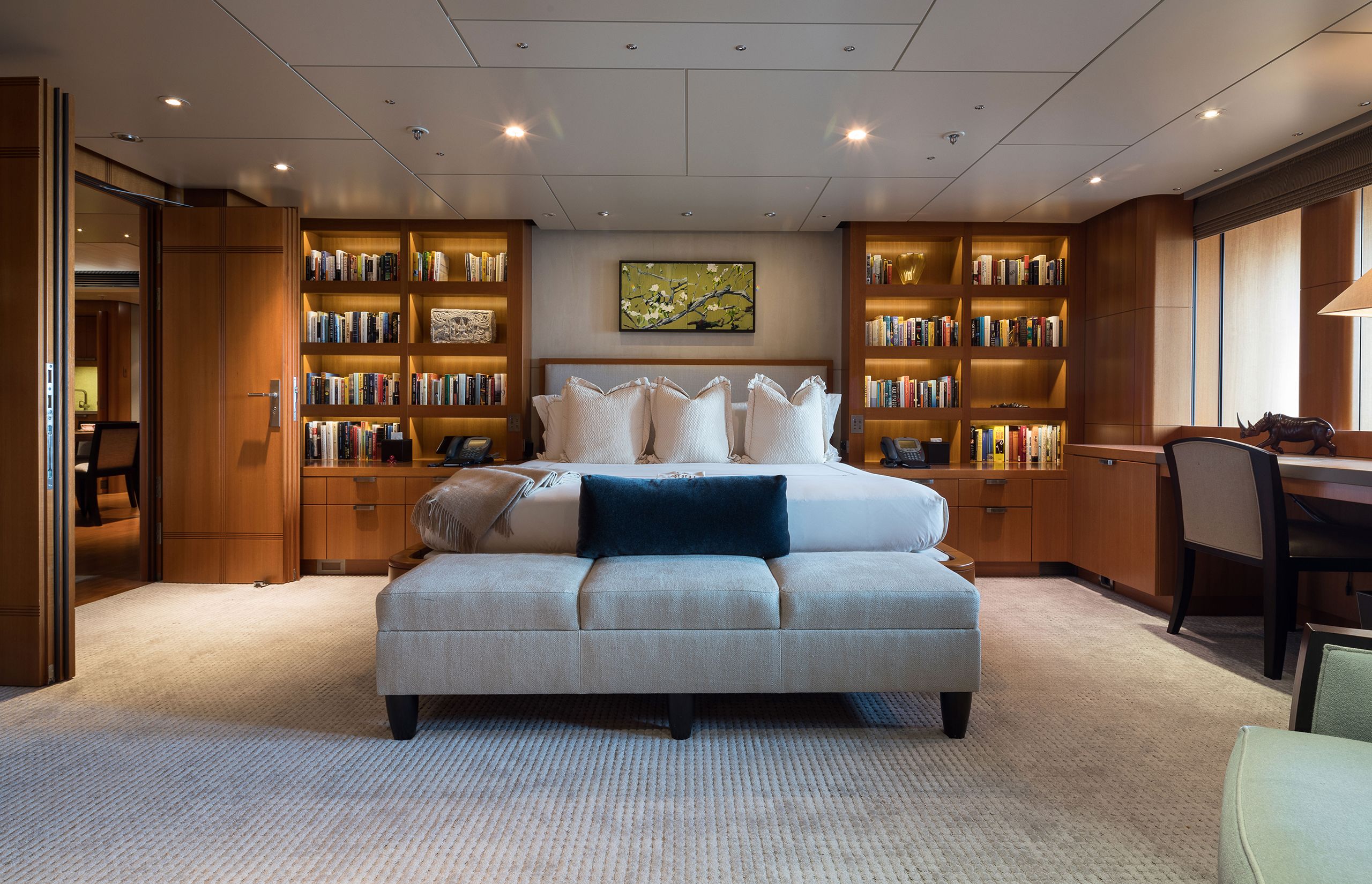

CAMPER & NICHOLSONS INTERNATIONAL
CAMPER & NICHOLSONS INTERNATIONAL

CAMPER & NICHOLSONS INTERNATIONAL
CAMPER & NICHOLSONS INTERNATIONAL

CAMPER & NICHOLSONS INTERNATIONAL
CAMPER & NICHOLSONS INTERNATIONAL

CAMPER & NICHOLSONS INTERNATIONAL
CAMPER & NICHOLSONS INTERNATIONAL

CAMPER & NICHOLSONS INTERNATIONAL
CAMPER & NICHOLSONS INTERNATIONAL
Top left: this suite takes up most of the owner’s deck. One level up, on the top deck, is a private observation lounge (bottom centre) that is only accessible from the owner’s suite. Bottom left: the guest observation lounge on the entertainment deck is also an excellent spot to dine. Bottom right: outside of the owner’s suite, the VIP guest cabin is the most grand and includes its own private saloon
Barnett took a simple approach to the interior decor. While some walls are painted a neutral colour, others are covered in bee’s wing-figured eucalyptus, and it’s this vast amount of wood panelling that gives the hardy explorer the warm, comfortable feeling of a home. For Allen and Barnett, the walls were just another fun puzzle to solve. “The geometry of the panels is elegant mathematics, something Mr Allen really appreciated,” Barnett says. “The handmade veneer arrived on custom-made grids, which fitted within the yacht’s own uniquely built steel frame spacing.” The walls do not just provide insulation and conceal cableways, but originally held the ever-changing art gallery on each deck. What’s on the walls today are snapshots of Octopus’s adventures over the years: panoramas of Patagonian icebergs, portraits of local tribe members in Tahiti and landscapes of Asia’s ancient golden temples.
An original feature that remains on the yacht to this day is an unusual timekeeping device. Braided stainless-steel shrouds from a sailing vessel are strung on either side of the grand staircase from lower to upper deck, and they function as a clock. “I combined the old tradition of having a central clock on board a ship with my client’s unique passions for modern sculpture, mathematics, art and music,” Barnett explains. “I subcontracted a 102-year-old German specialist clock company to make it, and – I’ll tell you a secret – I used digital audio software from Apple for the tunes. Sorry, Microsoft!” he says with a laugh. “I thought the clock might become a helpful visual cue to help guests find some critical orientation. Every 15 minutes, the strings could play anything from The Bells of St Mary’s to Jimi Hendrix!”
“I strove to respect the spirit of Octopus while capturing the new owner’s lifestyle and vision. It was an intense and challenging project”
Octopus was also fitted with an huge amount of onboard electronics. “Of course, the co-founder of Microsoft required more than 54 tonnes of AV and IT equipment on board,” Øino says with a smile. While the bulk of the wiring went to the studio, each cabin was assigned 60 cables for computers, entertainment systems and more, including touchscreens – which in 1998, was an exciting innovation. “They were amazing,” says Øino, “so far ahead of their time.” The touchscreens are still used today by the crew, who also use iPads as infotainment control panels for elements such as lighting and music in guest areas.
When Octopus launched in 2003, it was clear she had broken new ground. With diesel-electric propulsion consisting of two ABB electric motors and eight MTU 16V 4000 M50 diesel engines, she was perfectly equipped to travel anywhere in the world. “Octopus was always on the go,” Øino says. “Diesel-electric wasn’t commonplace in the early millennium,” he observes, and “Octopus was the first yacht with dynamic positioning.”
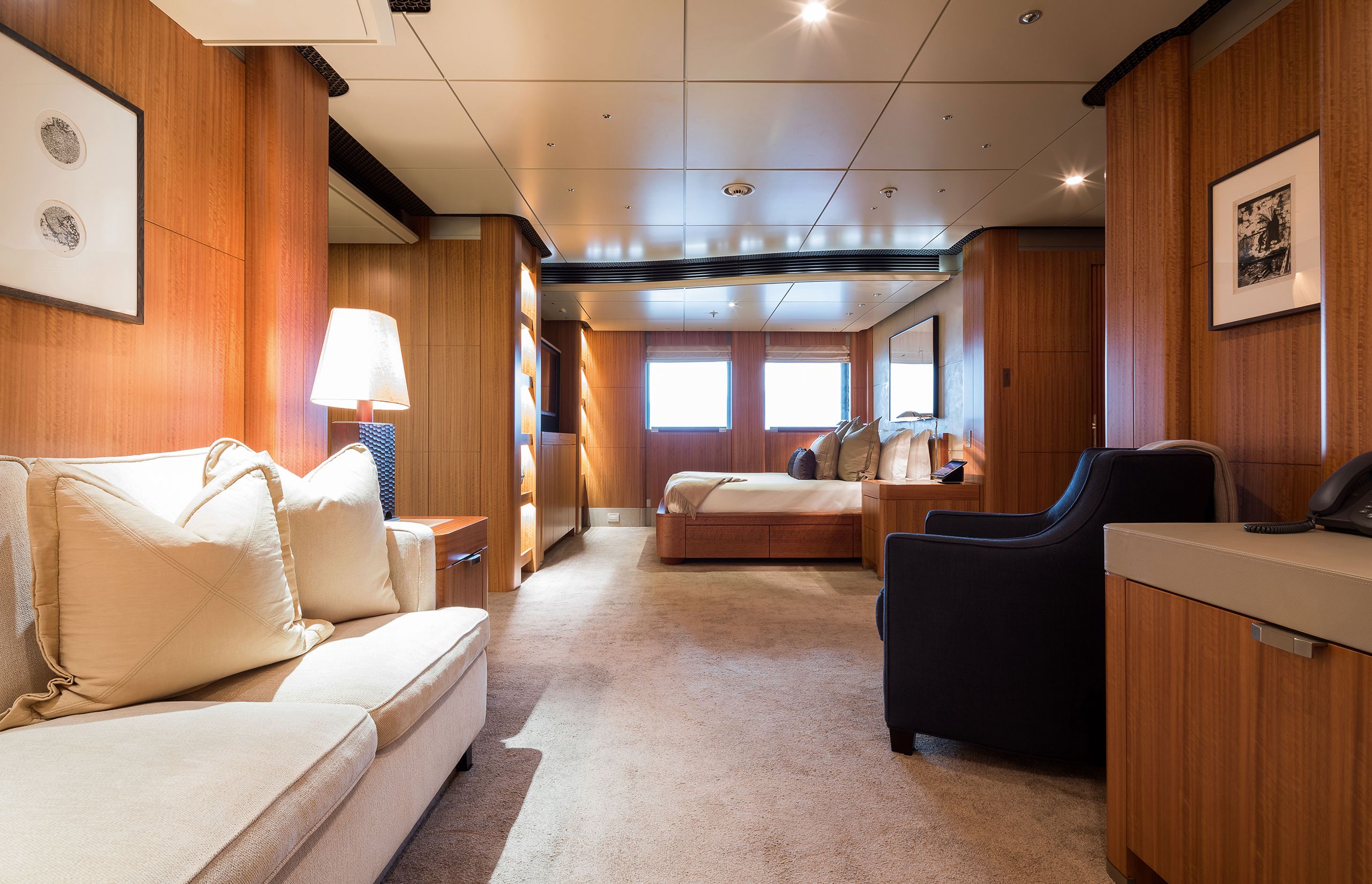
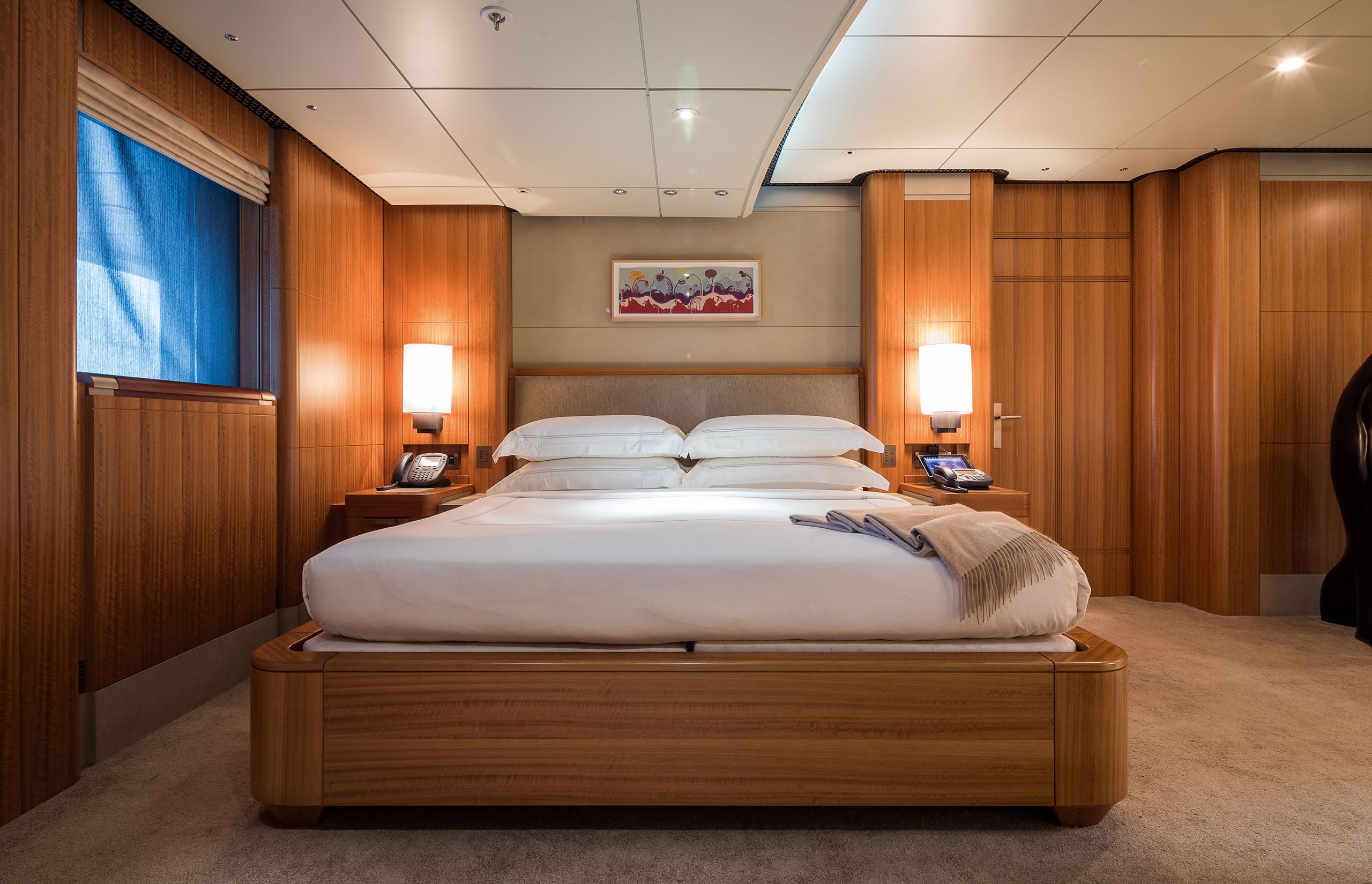
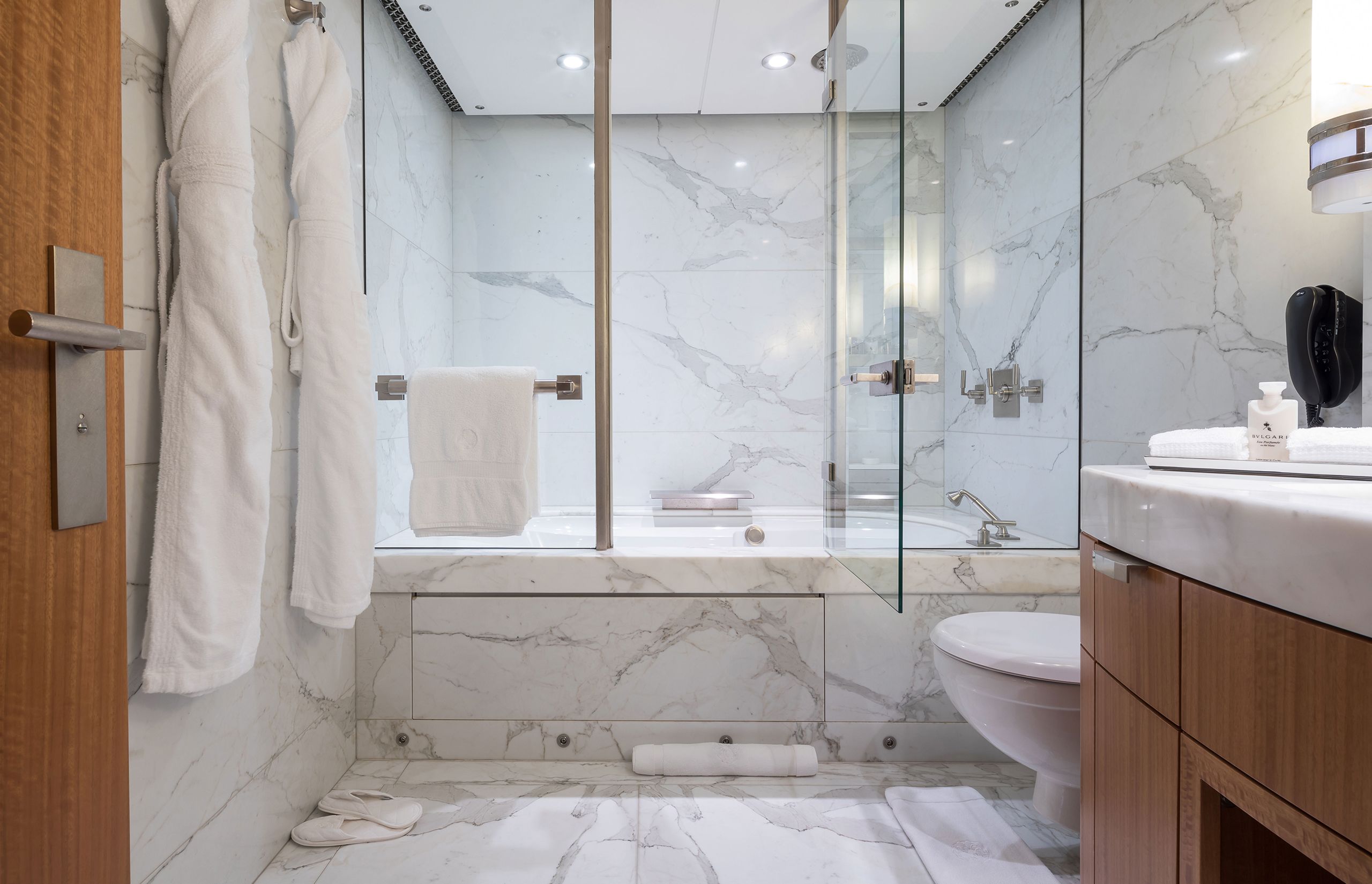
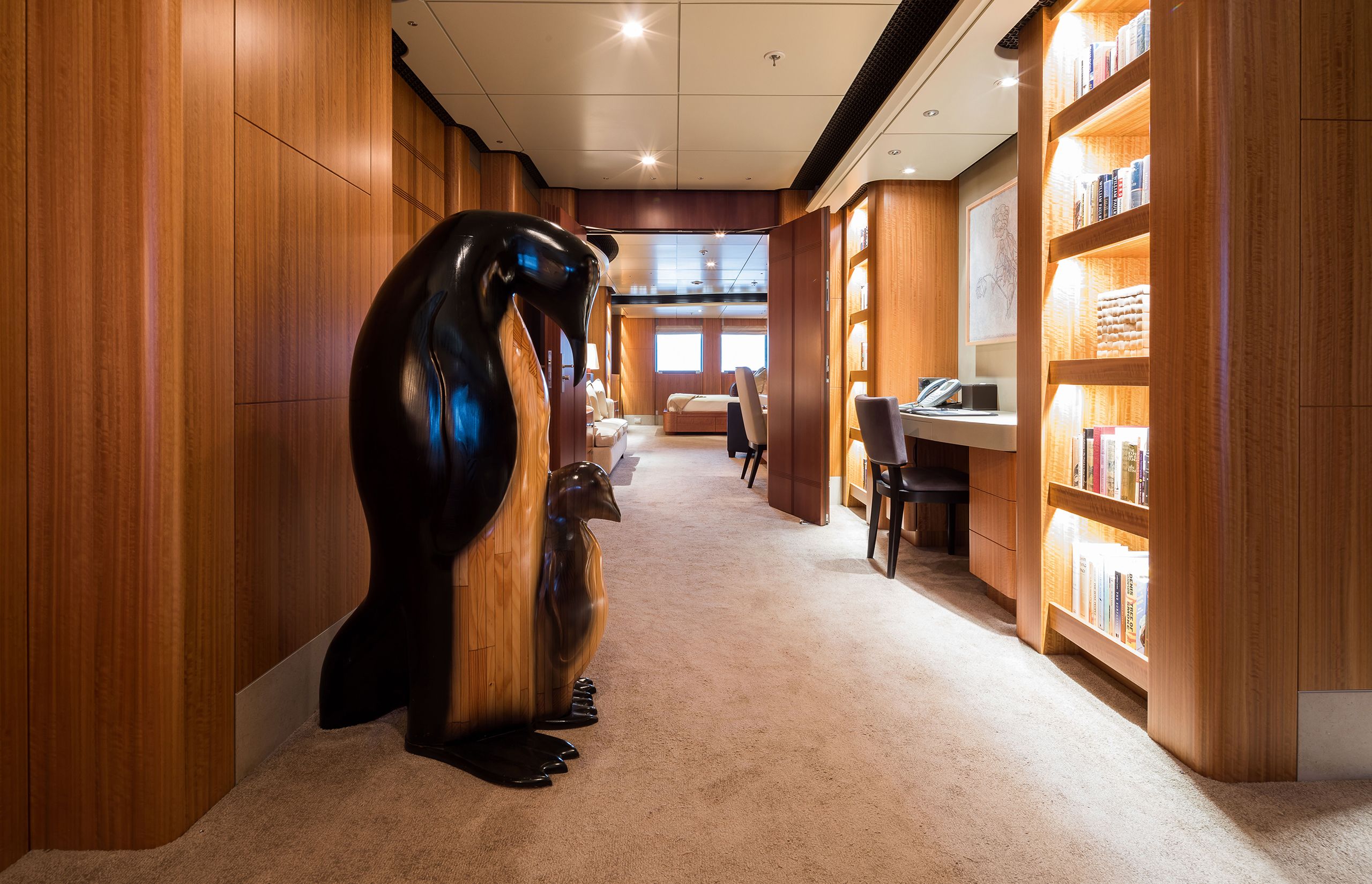

CAMPER & NICHOLSONS INTERNATIONAL
CAMPER & NICHOLSONS INTERNATIONAL

CAMPER & NICHOLSONS INTERNATIONAL
CAMPER & NICHOLSONS INTERNATIONAL

CAMPER & NICHOLSONS INTERNATIONAL
CAMPER & NICHOLSONS INTERNATIONAL

CAMPER & NICHOLSONS INTERNATIONAL
CAMPER & NICHOLSONS INTERNATIONAL
Top right: The 12 guest cabins, a mix of doubles and twins, are spacious in their own right, with sitting areas and lavish marble-clad en suites
The project propelled Lürssen into the large-yacht segment and her designers had a huge career boost. “Octopus blew everyone away,” Breman says. “The idea and the design are something unprecedented.” What the first aerial photographs of the yacht could make out were her winged wheelhouse, long swimming pool, two helidecks and hangars and a basketball court. Whereas on the inside, areas such as the dive centre with hyperbaric chamber, 12 cabins and private owner’s deck with its own lift, terrace and spa pool were out of sight.
After a decade of extensive travelling, Octopus’s engines had to be overhauled. However, her interior had worn well. “There was nothing that required a major redesign or change,” Barnett says. “All the original architecture, spaces, surfaces and design details still performed exceptionally well. Seeing it made me immensely proud.”
Although she was well-maintained and in full working order, in 2019 she was sent for a refit at the Lürssen-owned Blohm+Voss shipyard to prepare her for the market several months after Allen passed in 2018. She had spent two decades playing host to many parties, concerts, discoveries and expeditions, and the legacy needed to continue.
In 2021, a new owner came along with plans to make her available for select charters. Transforming Octopus into the remarkable charter yacht that he envisioned required a few more changes. The owner’s team enlisted Adriana Monk of Monk Design to retouch several spaces. Top of the list was replacing the recording studio.
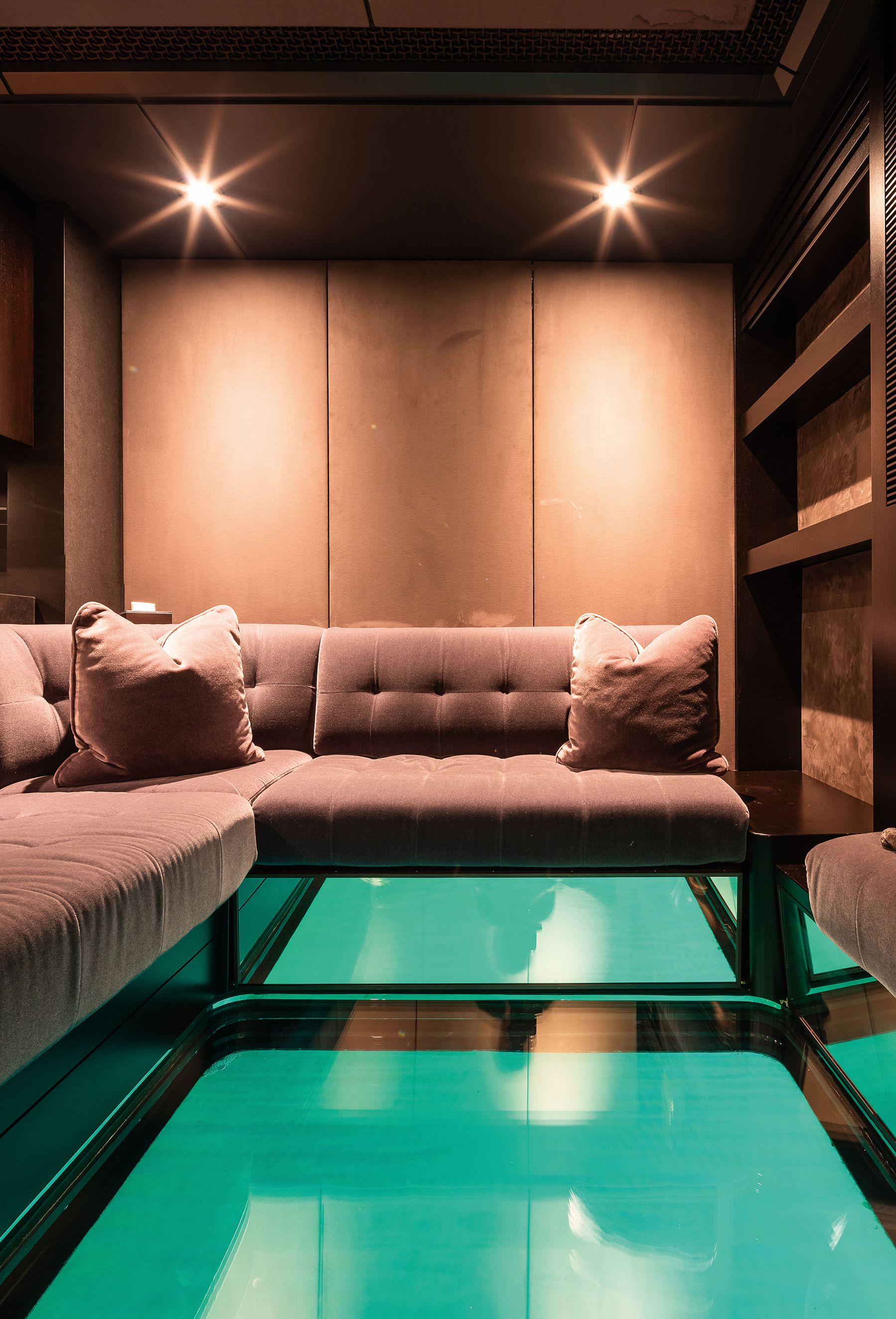
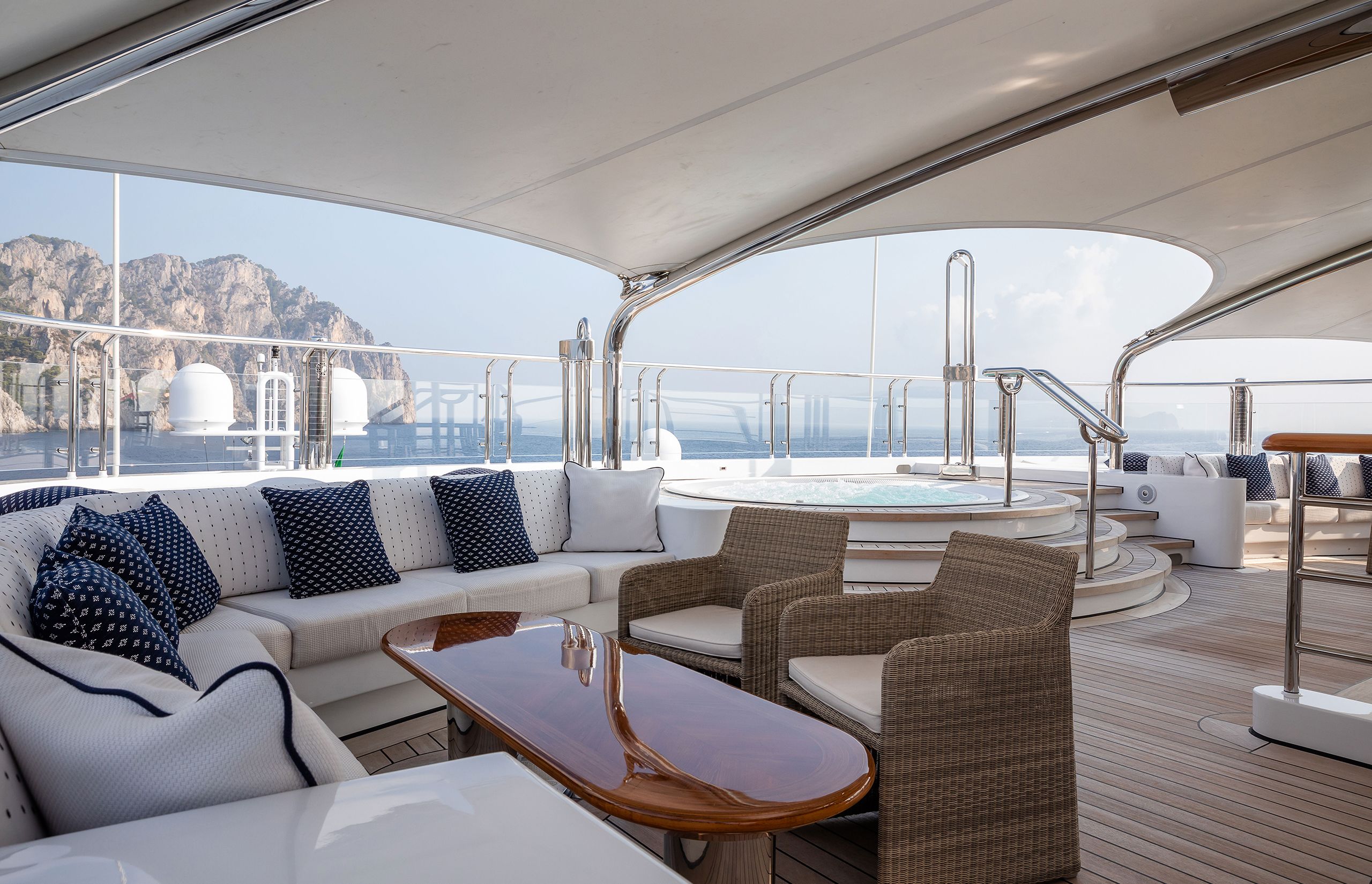
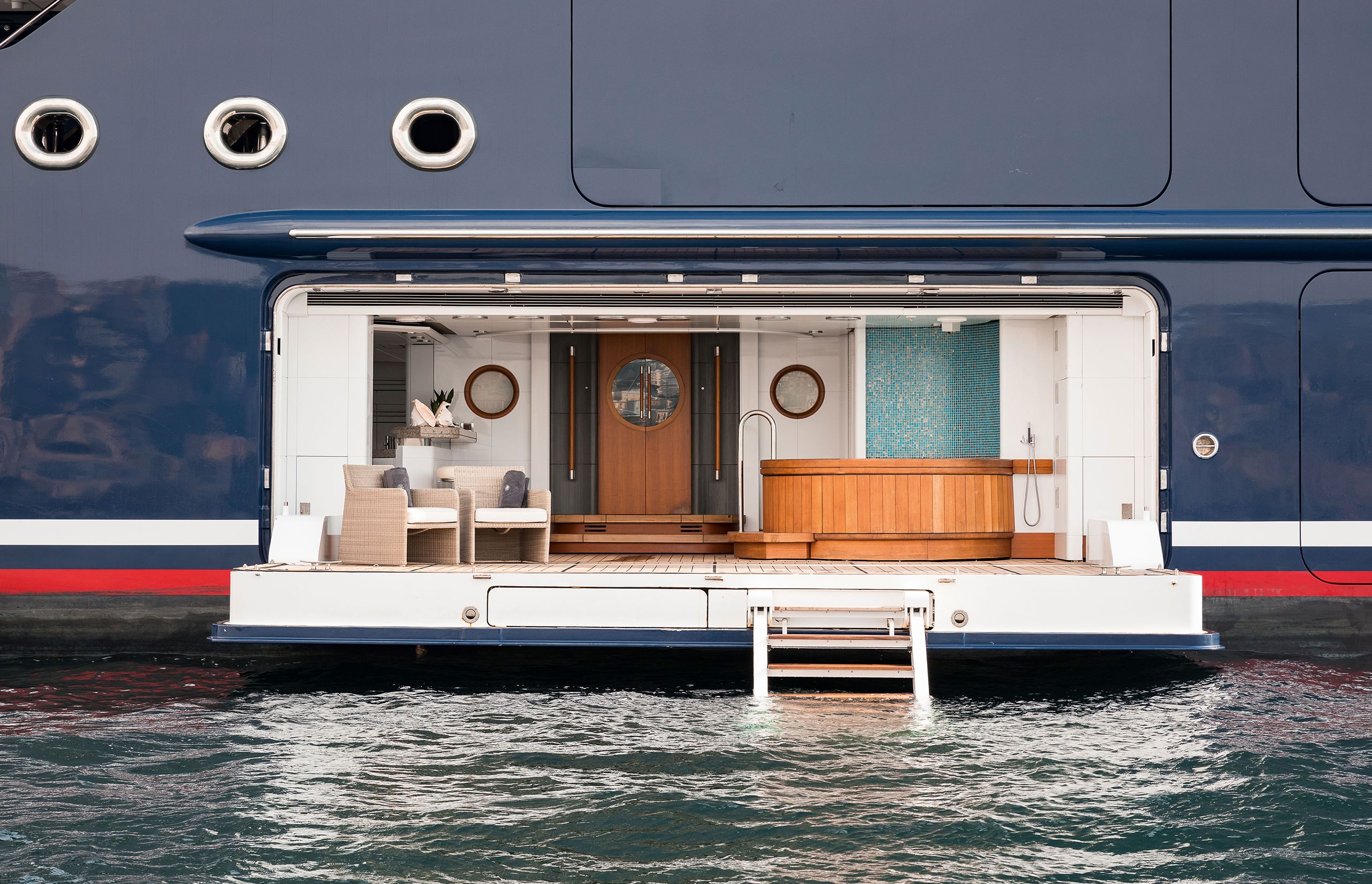
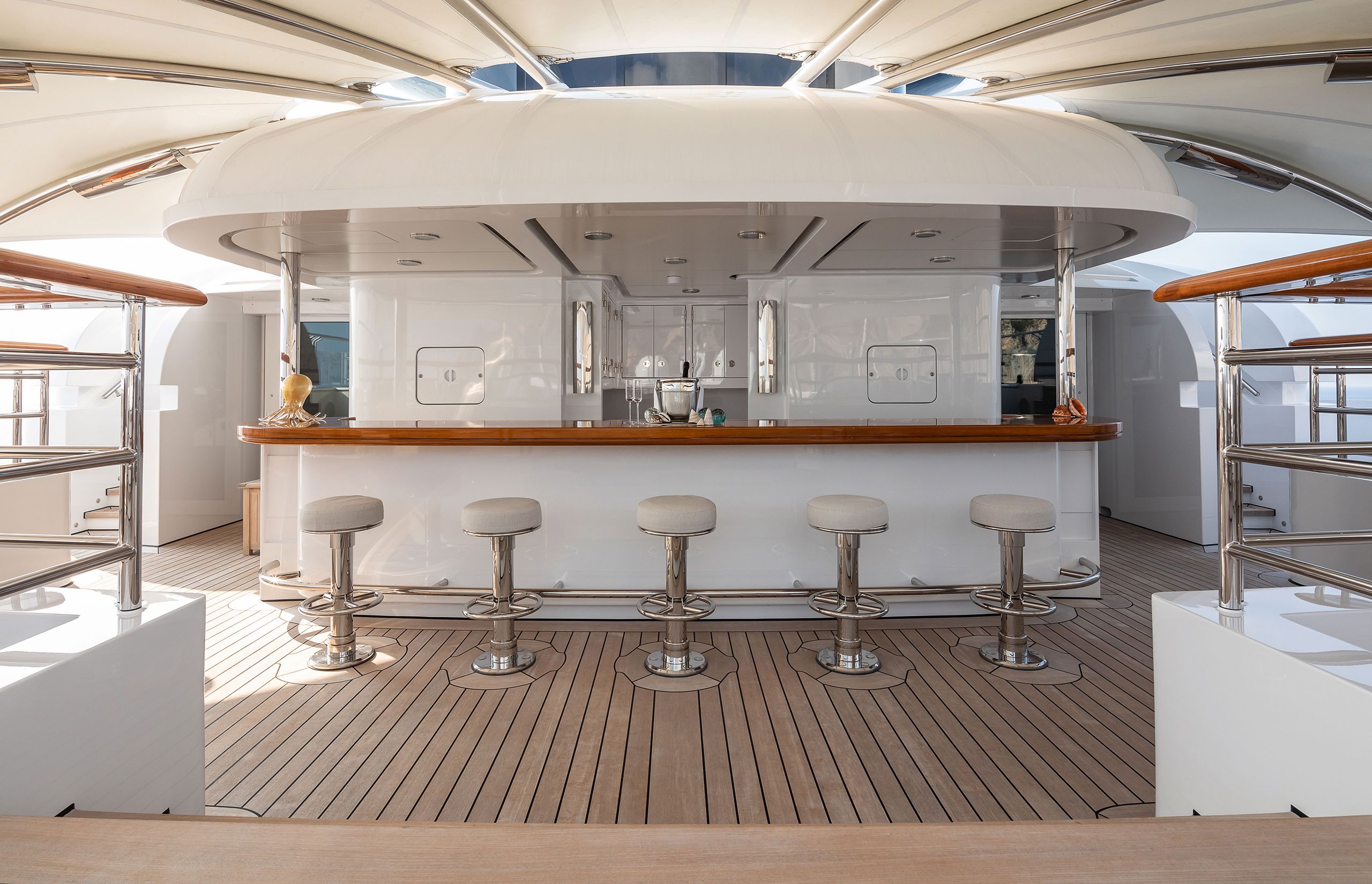
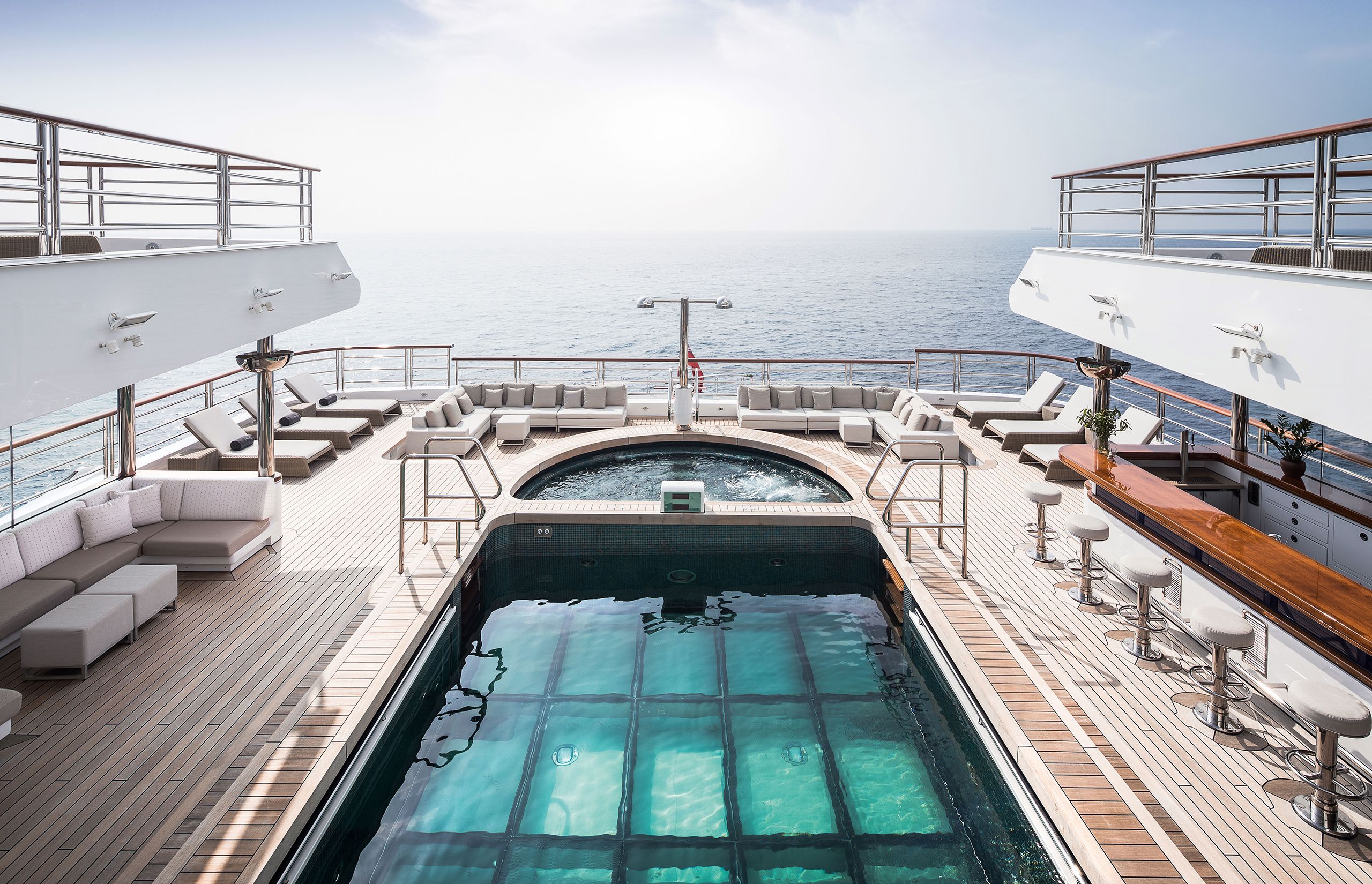

CAMPER & NICHOLSONS INTERNATIONAL
CAMPER & NICHOLSONS INTERNATIONAL

CAMPER & NICHOLSONS INTERNATIONAL
CAMPER & NICHOLSONS INTERNATIONAL

CAMPER & NICHOLSONS INTERNATIONAL
CAMPER & NICHOLSONS INTERNATIONAL

CAMPER & NICHOLSONS INTERNATIONAL
CAMPER & NICHOLSONS INTERNATIONAL

CAMPER & NICHOLSONS INTERNATIONAL
CAMPER & NICHOLSONS INTERNATIONAL
Top left: an underwater viewing lounge is hidden away at the bottom of the boat. Bottom left: a beach club with bar and spa pool is tucked into the starboard side hull. Bottom right: with a glass bottom that raises to deck level, the pool transforms into a dance floor. It’s just outside of the former music studio, whose isolation booth makes a perfect DJ booth
“Unless you’re really into music, a studio is a niche thing to have,” says Alan Pike, one of two rotational captains. Now in the studio’s prime position – aft on the bridge deck – is a modern bar/lounge. On either side of the new bar, new guitars hang from the original wall mounts and the grand piano has stayed put. In keeping with the beach bar look Monk created, new bleached oak flooring matches the original weathered teak deck outside.
“The vocal booth is now a DJ booth,” says the captain. “We’ve kept the soundproofing, so this place is perfect for a party, or any kind of dining.” With a new sound system and outdoor lighting, “we can really go for it”. Outdoors, there’s a glass-bottom pool that, at the touch of a button, can be made into an on-water dance floor. There’s also a wood-fired pizza oven, a service bar with a beer tap and three barbecue cooking stations.
On the entertainment deck, the former formal dining room became a wine bar. On the ceiling are scenes from Allen’s 2015 shipwreck dive to the Second World War battleship Musashi in the Philippines. “I was granted exclusive access to the ROV footage of the Musashi expedition to select shipwreck stills for the backlit ceiling,” Monk says.
Nearby, the guest observation lounge was, and still is, a firm favourite. “To dine here while cruising is a joy that’s hard to describe,” says Barnett. “I like to think of this area’s design as a mid-century sunken living room.” The feeling is created by two large sofas that snake around the room looking out over the bow. The seats look low, but the view is perfect. The rest of the deck is fun and social, as there’s also a 12-seat 4D cinema, the owner’s chef’s galley, a table-tennis table, gym, smoothie bar, hair and massage salons and a grand library, complete with an ethanol fireplace.
Soft beige and cream carpets with wave patterns have replaced patterned blue and green rugs, and in addition to the new custom-designed pieces, free-standing items of furniture selected by Monk have helped give the interior a feel that suits Octopus’s new charter lifestyle. But it’s nothing dramatic. “We have kept as much as possible true to the original,” the captain says. “I strove to respect the spirit of Octopus while capturing the new owner’s lifestyle and vision,” Monk adds. “It was an intense and challenging project.”
The yacht’s charter schedule was entrusted to Camper & Nicholsons. Octopus’s range of 12,500 nautical miles and true explorer credentials offer a huge scope for charter, and as the ripples prove on the hull’s strong plating, she is more than capable of going the distance. “She can do anything!” says charter marketing manager Gayle Patterson, who has already booked the superyacht on two excursions to Antarctica. The demand has been equal to the yacht’s renown. “We’ve grown our yacht management team to give her the care she deserves,” she adds.
Since Octopus was delivered, many more superyachts have adopted technologically forward designs and groundbreaking engineering and have undertaken impressive expeditions. But none have achieved what Octopus has. As she continues to move around the world, more people will get the opportunity to step on board. And when they do, perhaps they will feel the undeniable magic that seems to linger. One thing is for sure: wherever Octopus carries her guests, it is a journey they will remember for the rest of their lives.
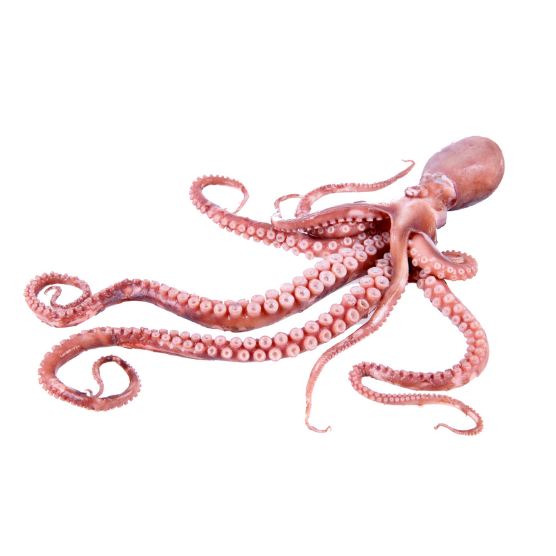
THE TOY CHEST
Built to explore, Octopus has an incredible fleet that revolves around the cavernous 36-metre internal wet dock where the two main tenders are stored and launched through a giant transom door. Today the main tender is an 18-metre Delta 54, built in carbon with an impressive range of 450nm at 30 knots; the original was Man-of-War, an 18-metre custom Vikal, later replaced by a 13-metre Hinckley.
Sharing that space was a yellow 10-person custom submarine, named Pagoo. A new Triton 3300/6 will take that spot when it is delivered in early 2023. Most of the other tenders have dedicated garages on either side of the wet dock. They are a 9.3-metre custom Vikal limousine and two 8.7-metre custom Zodiacs, one for diving, the other for guests. Two 5.8-metre Zodiac Milpro MK-V are also available for watersports, as is an array of WaveRunners, jet skis, kayaks, surfboards, wakeboards, kitesurfers, windsurfers and electric foil Fliteboards, plus plenty of diving equipment.
The icing on the cake is a remotely controlled submarine (ROV) able to dive to 2,700 metres. To conclude this impressive list, Octopus has two helipads and a helicopter hangar for two. Moving forward, helicopters will be chartered as needed.
Octopus is managed for charter by Camper & Nicholsons.
First published in the May 2022 edition of BOAT International. Get this magazine sent straight to your door, or subscribe and never miss an issue.
The owner’s deck includes a private foredeck with bar and spa pool, shaded by an awning
The former recording studio is now a bar/lounge with a grand piano
A seven-metre-long heated pool is aft on the bridge deck
Five of the cinema’s 15 seats feature D Box vibration
Next to the gym, the spa has a sauna, steam room, hairdressing salon and massage room
The VIP suite extends the full width forward on the guest deck
The owner has a private lift from the owner's deck to the guest deck
A storm cabin is located in a spot that will see little movement in bad conditions
Four more guest cabins are found on this deck, which predominantly accommodates crew
A Triton 3300/6 submarine will join the 18-metre Delta in the garage in early 2023
A dive centre features a platform that opens onto the sea

